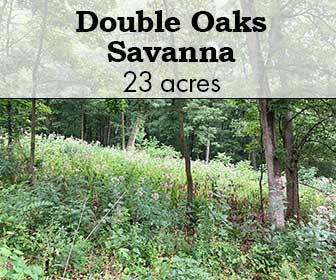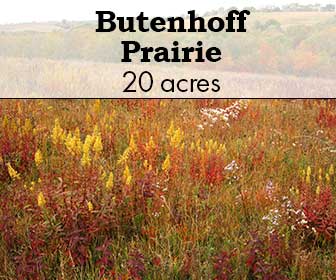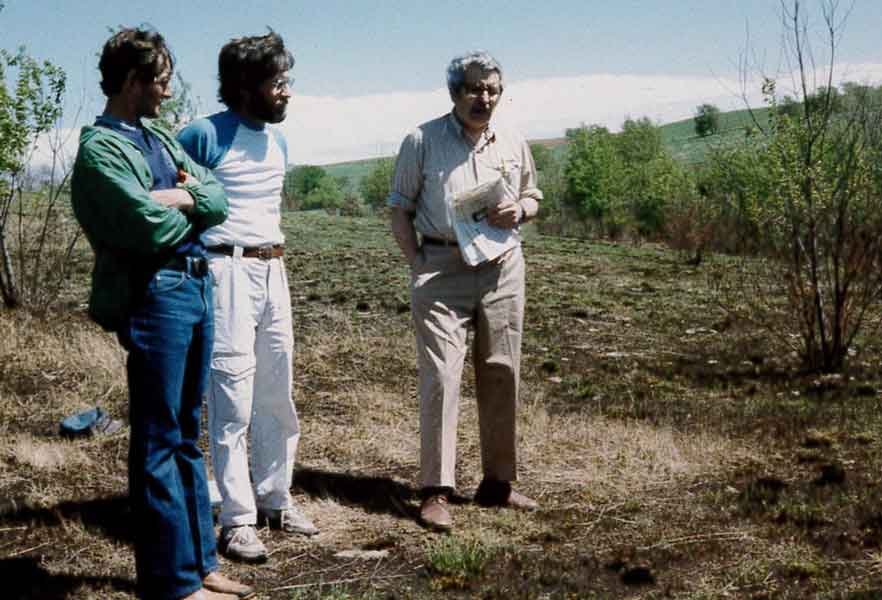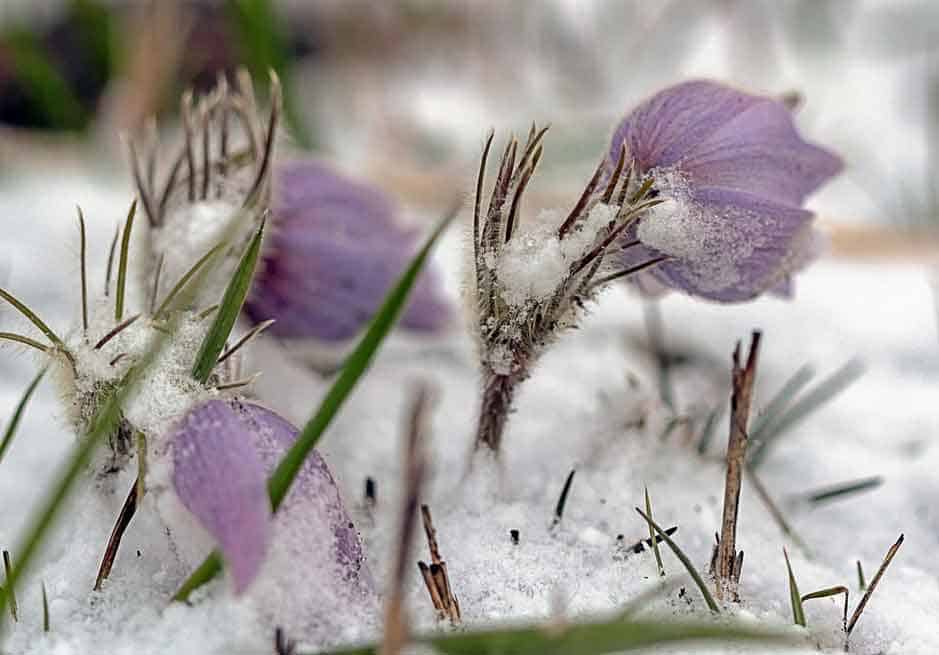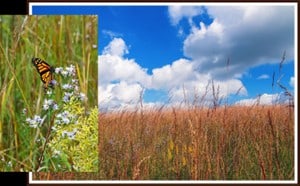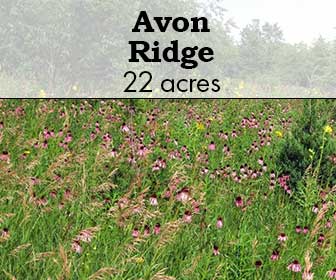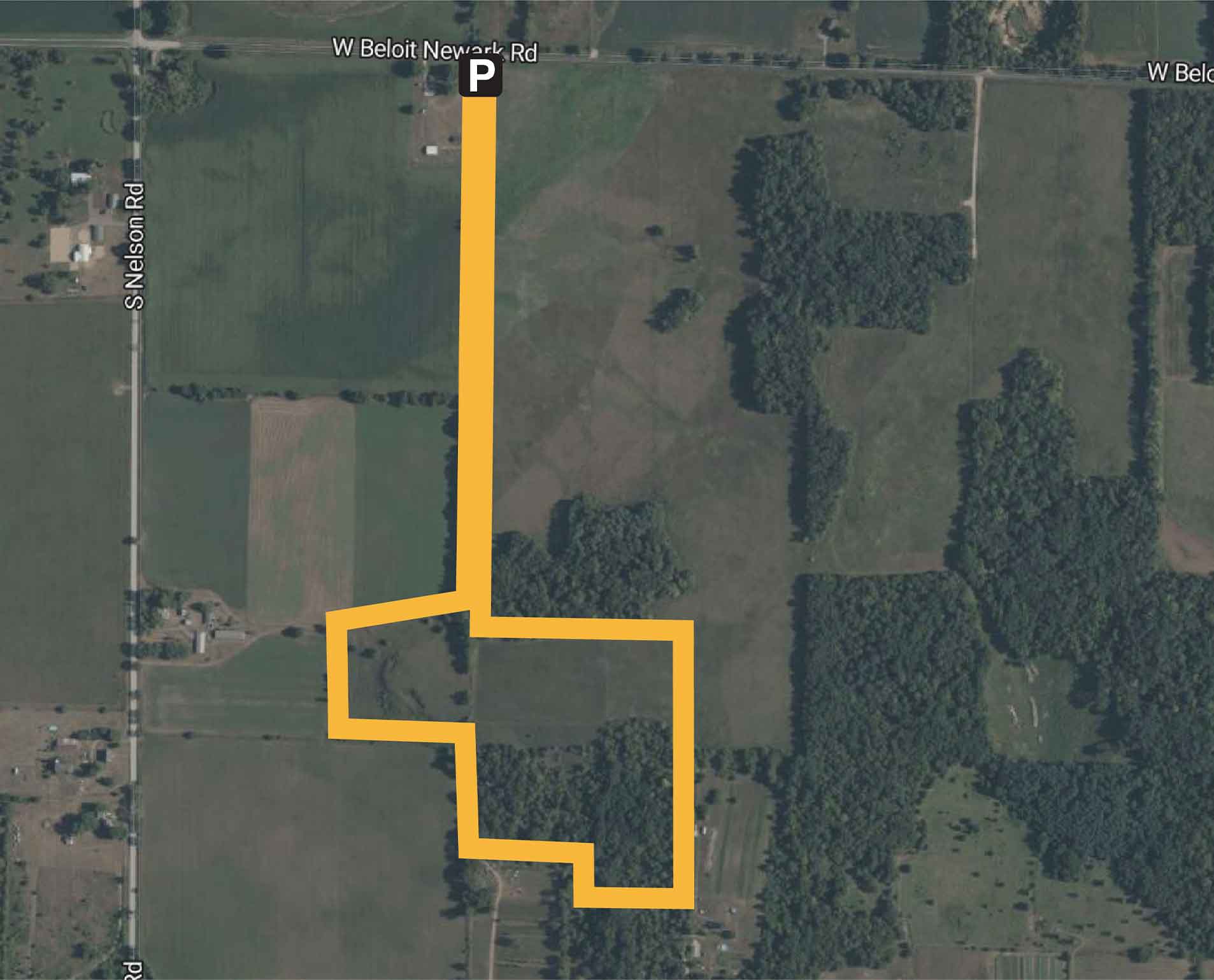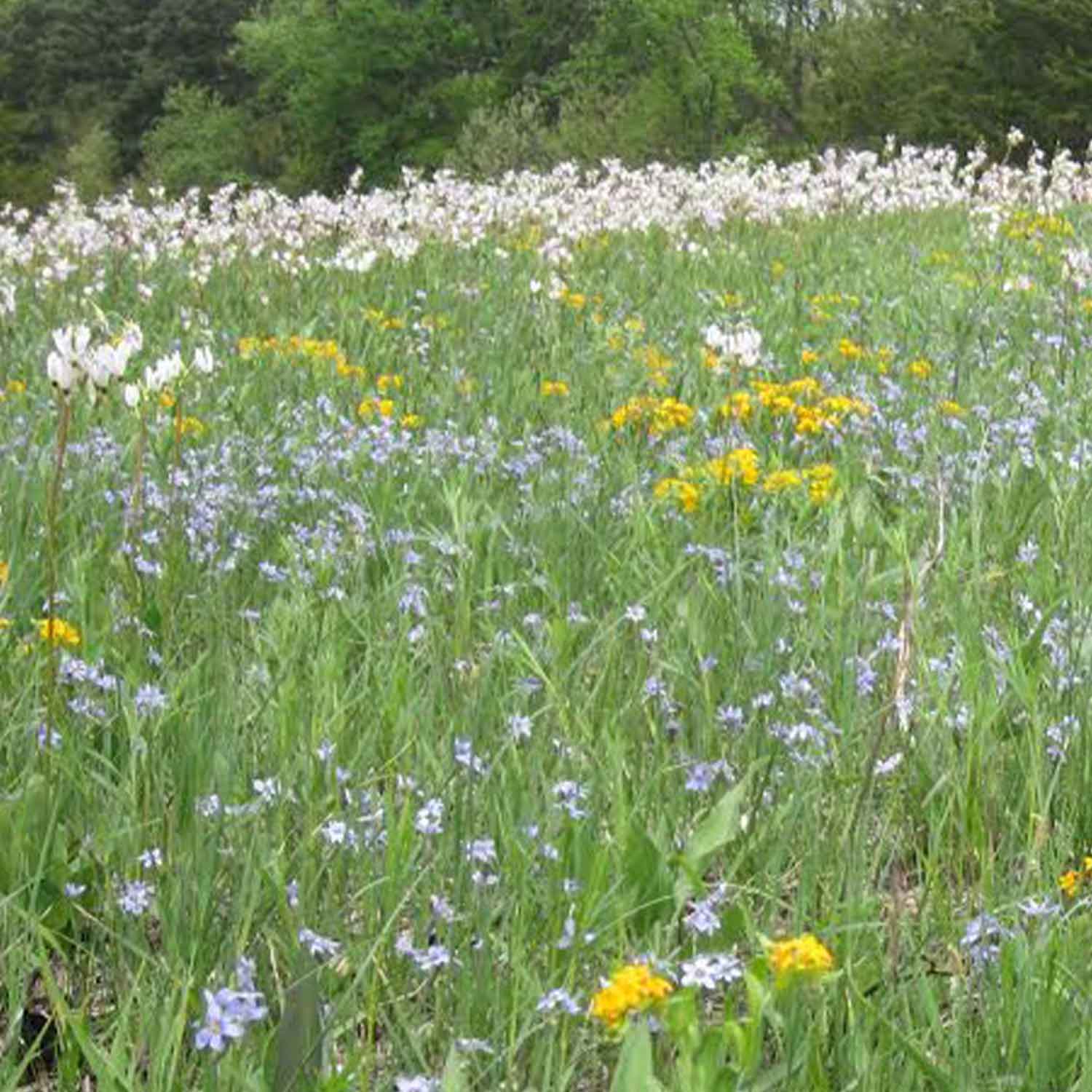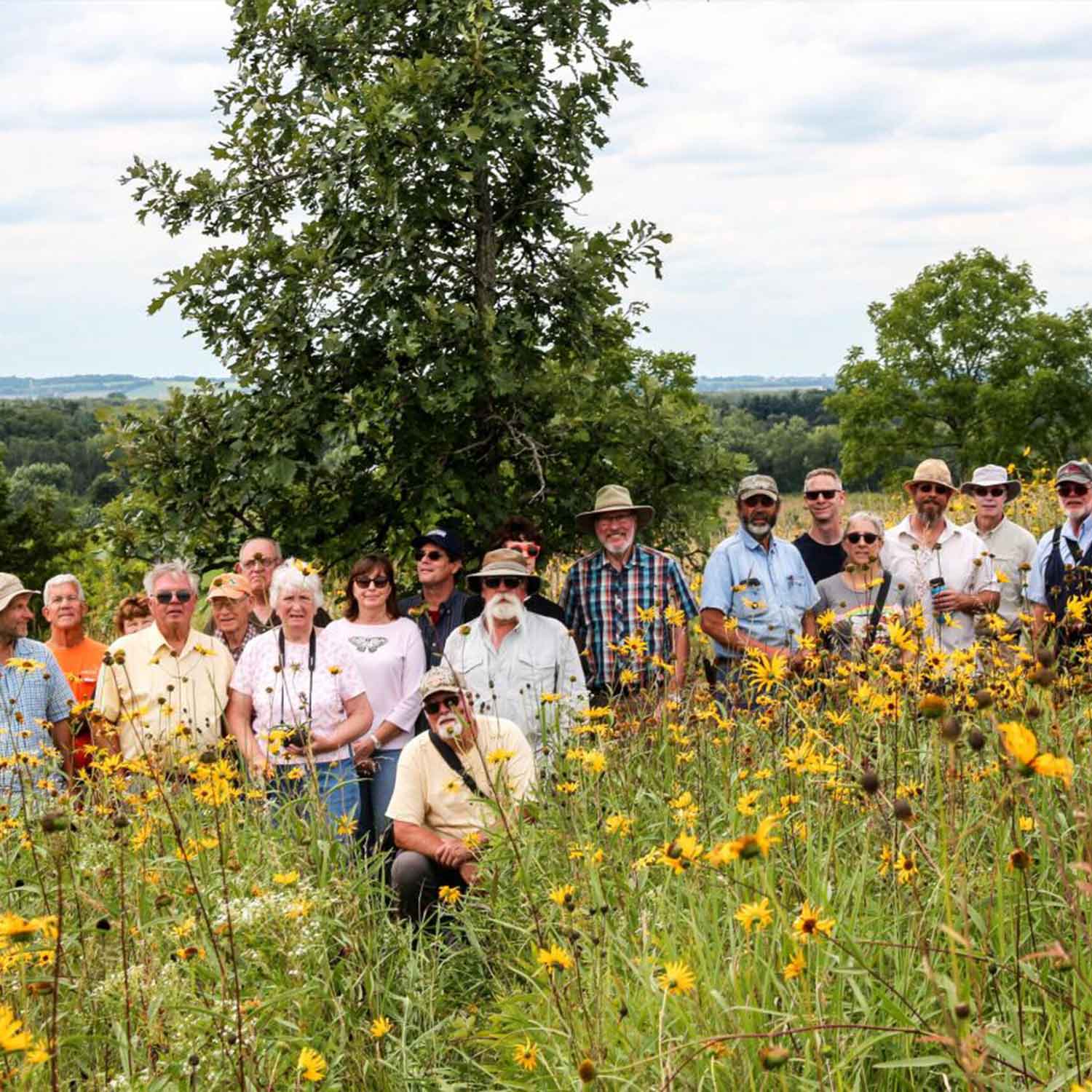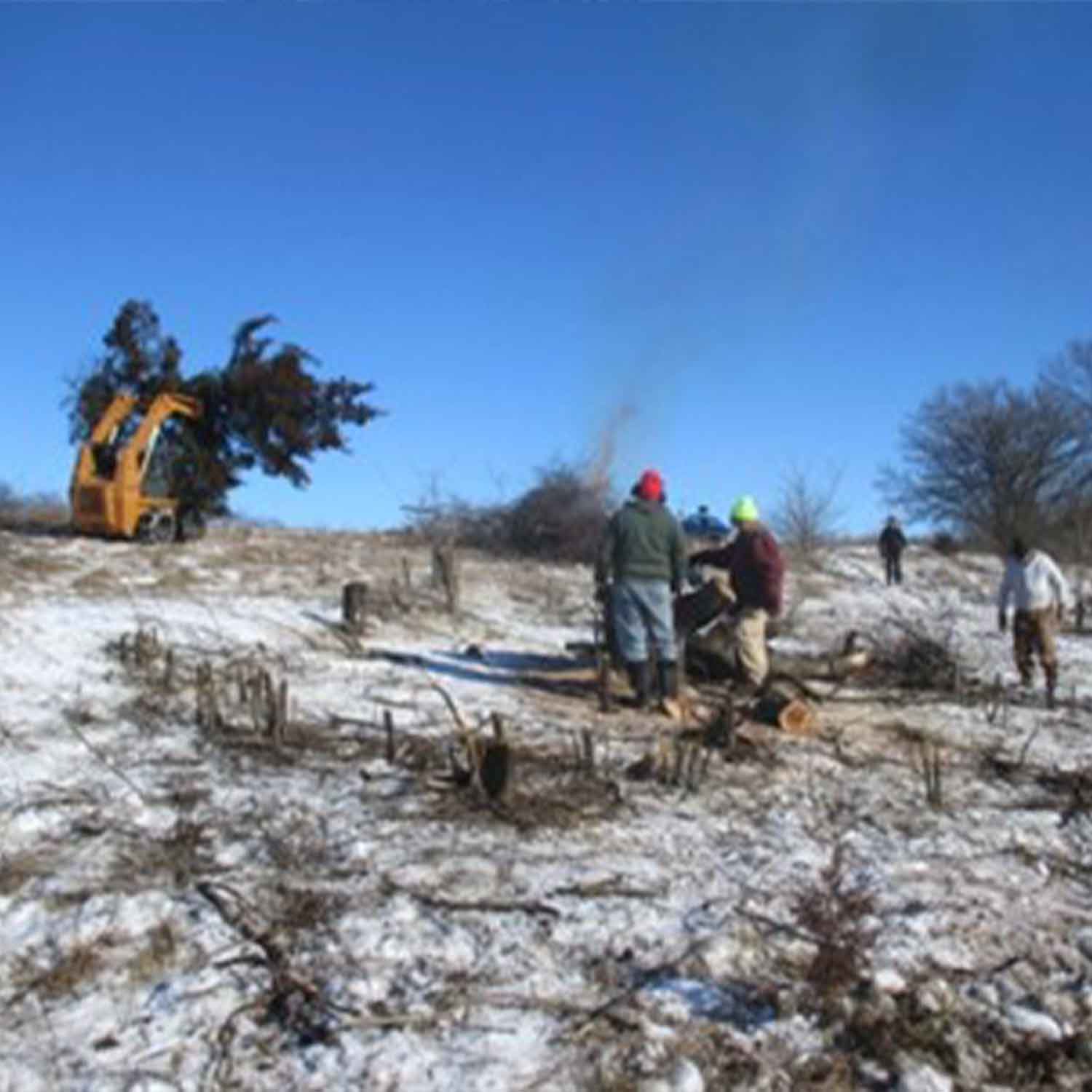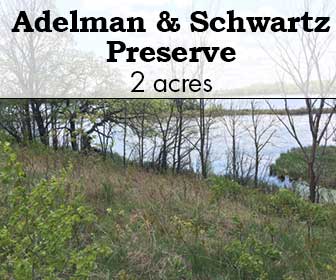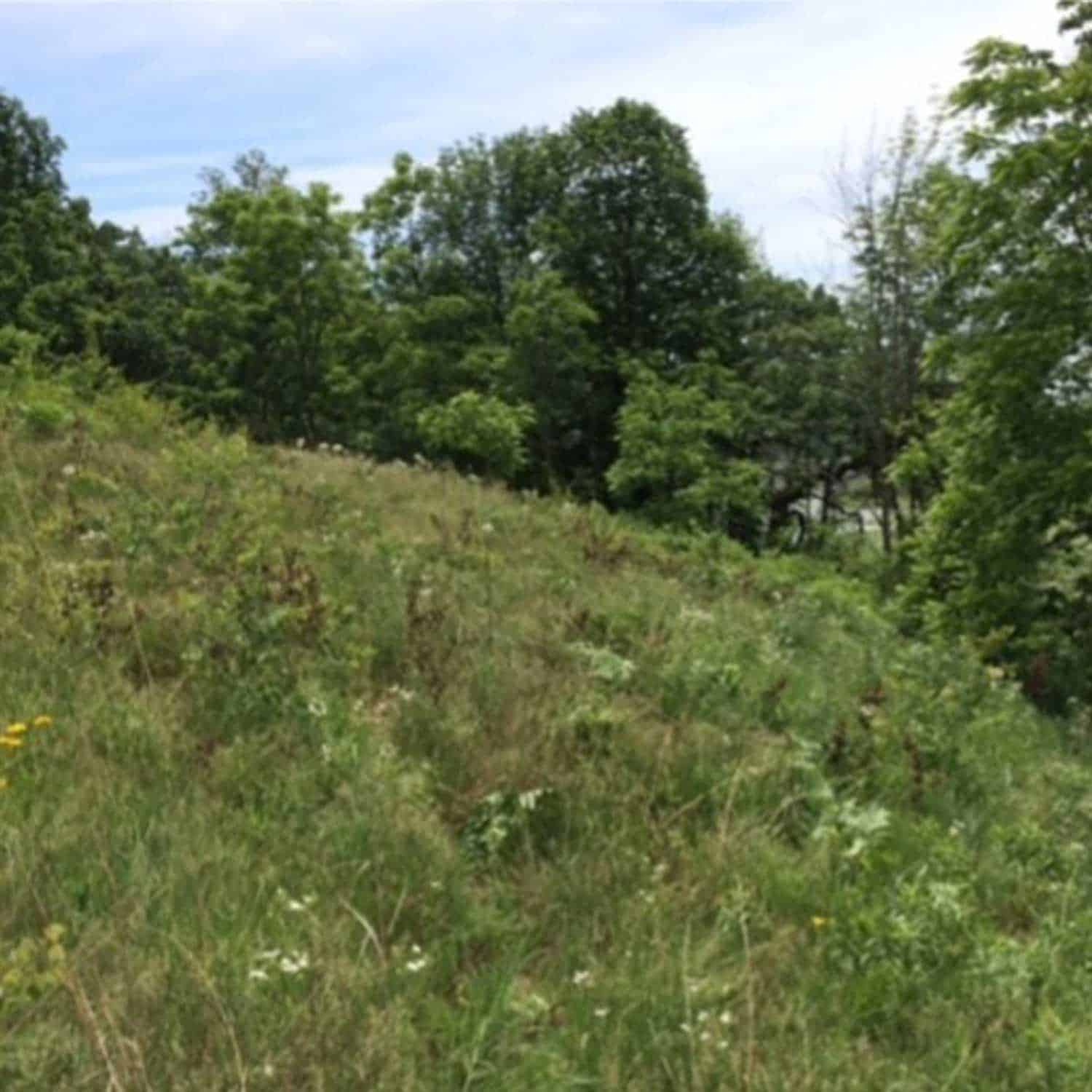Management
The first burn at this site was conducted in the spring of 1988 by the league, many of whom were also Prairie Enthusiasts – Eldred, John Ochsner and Gary Felder. This burn was held at night and attracted large numbers of spectators, whose cars lined County FF to see the rare sight of a prairie afire at night. On the day before the transfer of title was to be celebrated by TPE in 1993, the league inadvertently set fire to the prairie, so that on dedication day there were no flowers to be seen, only blackened soil. Dr. Hugh Iltis was The Guest Speaker that day in 1993, and the prairie enthusiasts had to travel to nearby Sulzer Prairie to see any spring flowers.
Early efforts by both the league and The Prairie Enthusiasts to restore the prairie to its original condition did not include herbicide use on the cut stumps, so that all of the cherry, walnut, elm and honeysuckle quickly re-sprouted. Management techniques had improved by 2009, and in recent years all the invasive trees and most of the brush have been removed – permanently this time. Plants introduced by the league include compass plant, pale purple coneflower, wild quinine and rattlesnake master.
Tom Mitchell, the site steward, has organized work parties since 2009. Work parties are held periodically during three seasons; our access is generally impassable during winter due to snow, ice or muddy conditions.
Seasonal work at Butenhoff Prairie emphasizes the control of weeds and brush during the spring and summer months. Non-native plants of lesser concern are the sweet clovers, wild parsnip and wild carrot, which are managed by hand when present in small patches and mowed when found in larger patches. Trees and brush have been removed from a former fence line on the northern boundary.
The southeastern portion of Butenhoff Prairie has an infestation of the non-native leafy spurge (Euphorbia esula), a perennial that is native to Europe and Asia. It is deep-rooted with milky sap in all parts of the plant. In Wisconsin, it is a restricted plant –an invasive this is already established in the state and has the potential to cause significant environmental or economic harm. Leafy spurge is one of five “noxious” weeds in Wisconsin, and according to the Invasive Plants Association of Wisconsin (IPAW), it can quickly create monocultures, excluding native vegetation and reducing wildlife habitat value. We have used bio-controls – flea beetles – to reduce the prevalence of leafy spurge.
